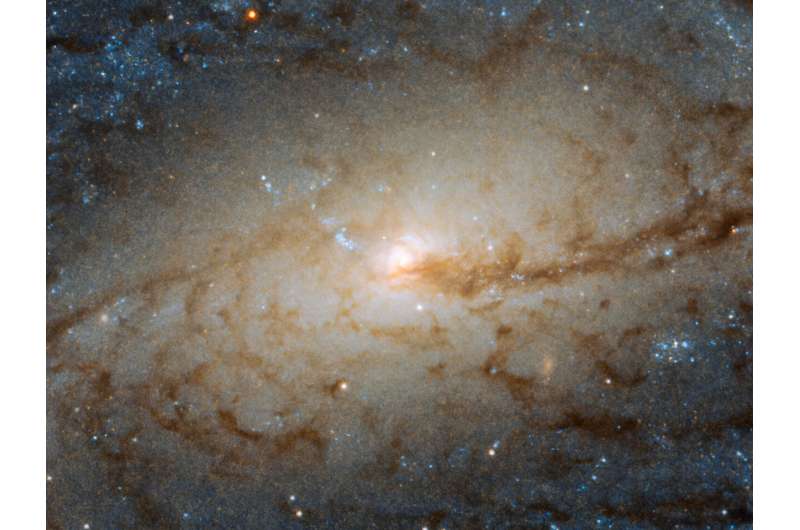Image: Hubble spies galactic traffic jam

The barred spiral galaxy NGC 3887, seen here as viewed by the Wide Field Camera 3 aboard the NASA/ESA Hubble Space Telescope, lies over 60 million light-years away from us in the southern constellation of Crater (the Cup). It was discovered on Dec. 31, 1785, by astronomer William Herschel.
Its orientation to us, while not exactly face-on, allows us to see NGC 3887's spiral arms and central bulge in detail, making it an ideal target for studying a spiral galaxy's winding arms and the stars within them.
The very existence of spiral arms was for a long time a problem for astronomers. The arms emanate from a spinning core and should therefore become wound up ever more tightly, causing them to eventually disappear after a (cosmologically) short amount of time. It was only in the 1960s that astronomers came up with the solution to this winding problem; rather than behaving like rigid structures, spiral arms are in fact areas of greater density in a galaxy's disk, with dynamics similar to those of a traffic jam. The density of cars moving through a traffic jam increases at the center of the jam, where they move more slowly. Spiral arms function in a similar way; as gas and dust move through the density waves, they become compressed and linger before moving out of them again.
Provided by NASA's Goddard Space Flight Center





















